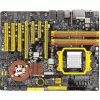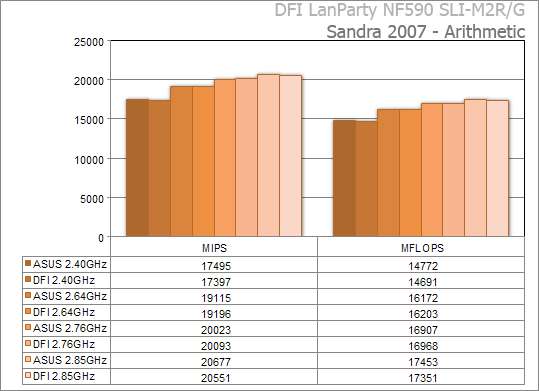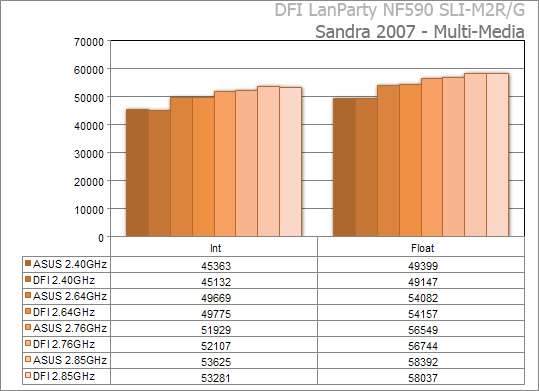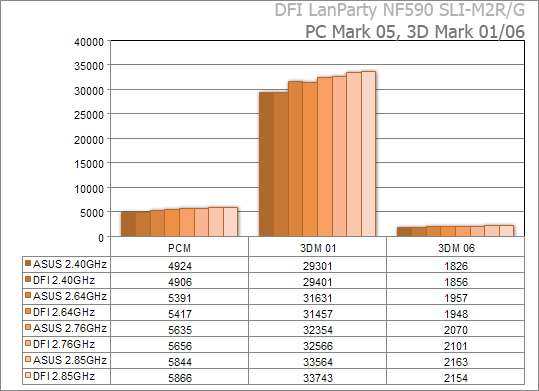- Qualcomm Launches Snapdragon 4 Gen 2 Mobile Platform
- AMD Launches Ryzen PRO 7000 Series Mobile & Desktop Platform
- Intel Launches Sleek Single-Slot Arc Pro A60 Workstation Graphics Card
- NVIDIA Announces Latest Ada Lovelace Additions: GeForce RTX 4060 Ti & RTX 4060
- Maxon Redshift With AMD Radeon GPU Rendering Support Now Available
DFI LanParty UT NF590 SLI-M2R/G

DFIs highly anticipated AM2 enthusiast board is finally here, after months of development. Like previous LanParty boards, this one caters to the overclocker, and simply checking out the BIOS screams that fact. Does it please this enthusiast? Read on…
Page 6 – Testing Methodology, SANDRA, Everest
|
|
Throughout all of our benchmarks regardless of what we are reviewing, testing is done in a clean and stand-alone version of Windows XP Professional with SP2. Prior to testing, these conditions are met:
- Desktop and scrap files are cleaned up, including emptying of recycle bin.
- No virus scanner or firewall is installed in the stand-alone installation.
- The stand-alone installation drive is completely defragged using Diskeeper 10 Pro Premier.
- All unnecessary programs are closed, so that Windows should have no more than 15 active processes running.
- Computer has proper airflow.
If you are interested in using the same benchmarks as us, feel free to visit the developers website:
- 3D Mark 2001
- Cinebench 2003
- Everest Ultimate 3.0
- PC Mark 2005
- Sandra 2007
- Sciencemark 2 (Official site vanished)
- Super Pi 1.5 Mod
The testing rig used for today’s benchmarking is as follows:
- CPU: AMD Windsor 4600+ EE @ 2.4GHz – 2.85GHz
- Motherboard: DFI NF590 SLI-M2R/G (829 BIOS)
- Memory: OCZ 2GB PC2-7200 EPP
- Video: ASUS 7800GT TOP
- Sound: Onboard HD Audio
- Storage: Seagate 7200.9 320GB
- Etcetera: Windows XP Professional w/ SP2, NVIDIA 81.98 Drivers
- Cooling: Corsair Nautilus 500
I will be comparing the results of this board to the recently reviewed ASUS M2N32-SLI Deluxe. Many results are borrowed straight from our original 4600+ testing, except for the graphics based ones which were re-run due to a different GPU being installed.
Sandra is a benchmarking tool I use often, but not usually for CPU testing. The Arithmetic and Multi-Media thrive on CPU power though, so they are perfect scores to go by.
The DFI board was outrun by the ASUS board in the stock speed tests, and also the top speed tests. However, the story was different regarding the two middle testing settings. Paying attention to our 2.85GHz results though, the DFI proved 100 points lower, or 0.6%.

Not surprisingly, the exact same results have stemmed in the Multi-Media tests also. Here, the differential between both boards at the top overclock is 0.65%.

In the Everest tests, each board has their strong runs but the ASUS came out in top overall.

Close results once again here, but the DFI board outperformed the ASUS in the majority of the tests. The 3D Mark 06 results are from the CPU test only, for reasons that I can’t explain because I tend to not use my brain. I really have no other excuse.

Haven’t had enough benchmark results yet? Good, let’s move on.
|
|
Support our efforts! With ad revenue at an all-time low for written websites, we're relying more than ever on reader support to help us continue putting so much effort into this type of content. You can support us by becoming a Patron, or by using our Amazon shopping affiliate links listed through our articles. Thanks for your support!





